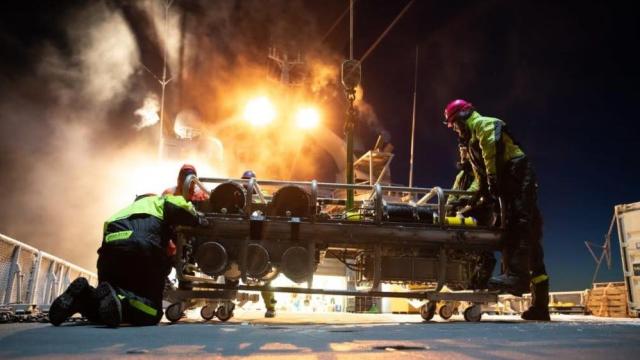Last winter, researchers anchored underwater listening devices to the bottom of the Beaufort Sea in the Arctic. Now, they’re making the treacherous journey to pull them up to see what they can teach us about the climate crisis.
The scientists deposited the devices in August 2019 on voyage called the Coordinated Arctic Acoustic Thermometry Experiment. Since then, the instruments have been recording sounds from under the water, as well as other oceanographic data like temperatures, carbon concentrations, and salinity. The work is part of an international project aimed at measuring the changes in the average temperature of the Arctic Basin over the past 20 years.
Researchers plan to use the acoustic information to more accurately measure ocean warming. Since sound travels more quickly in warm water, data on sound in the ocean can tell them quite a bit about how much the water is heating up.
The mission to retrieve the instruments was planned only recently. Scientists with the U.S. Coast Guard originally planned to recover them in August but were forced to turn back due to an electrical fire on their icebreaker ship. But in mid-October, 55 officers and scientists boarded a Norwegian Coast Guard ship to finish the job. The trip marks the first time Norwegian researchers have cruised north of Alaska on a research mission.
The team aims to recover three moorings from the seafloor. So far, they’ve managed to obtain one, the Barents Observer reported on Monday. It wasn’t easy, either; the operation to lift it out of the water took 10 hours in the bitter cold of the Arctic.
The scientists are racing against the clock to find the other moorings before their batteries run out. This timeline is important because to develop a more accurate picture of when and where each acoustic data point came from, they’ll need to do calculations based on the devices’ temperature readings and atomic clocks that are built into the instruments. But those atomic clocks are set to die soon, which could make these numbers much harder to crunch accurately. As the temperatures continue to drop in the Arctic, conditions could become even more difficult.
“The Coast Guard will do our utmost to ensure that the moorings and the information they carry are brought ashore safely,” Oliver Berdal, commander of the Norwegian Coast Guard, told the Barents Observer. “However, the operation must be carried out in a safe manner and without great risk to personnel and equipment.”
